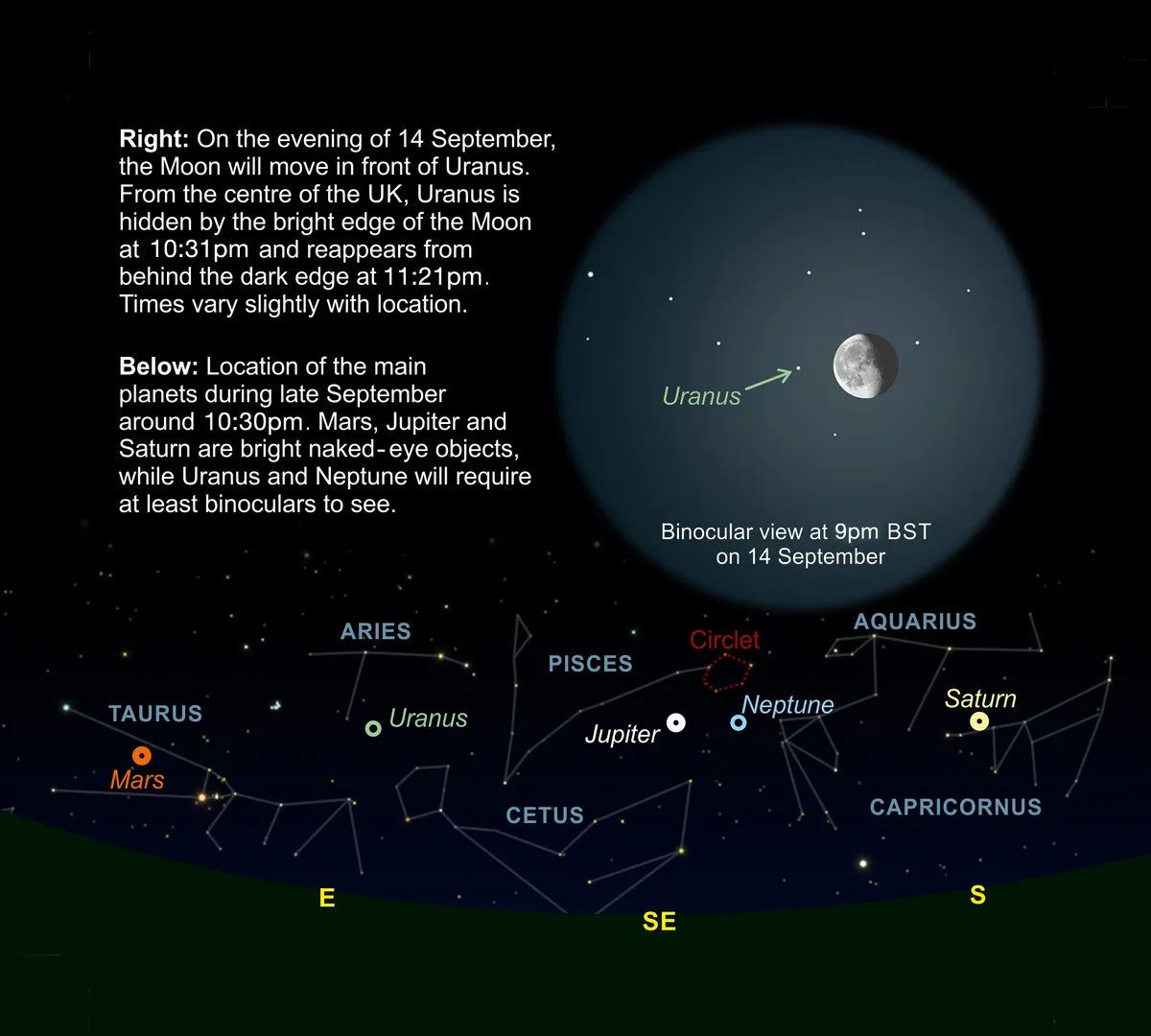The planetary progression starts with Saturn, which is visible 20 ̊ above the southern horizon at 11 pm BST on 14 September, progressively getting to this position earlier each night to arrive there by 10 pm on 30 September.
For reference, the horizon is 0 ̊ and the overhead point, or zenith, is 90 ̊, with 20 ̊ representing a height approximately one-fifth up the sky.
Jupiter follows Saturn higher across the sky and is unmissable because of its brightness. Less obvious is dim Neptune, which requires binoculars to see. It’s located west-southwest of Jupiter below a circular pattern of stars known as The Circlet.
Later in the evening, it’s the turn of Mars and Uranus to make an appearance. Like Neptune, Uranus is dim and benefits from binoculars. If it’s clear on the evening of 14 September, the waning gibbous Moon, which is 77 per cent lit, moves in front of Uranus. This is a rare event known as a lunar occultation.

The bright edge of the Moon hides Uranus at 10:31 pm, as seen from the centre of the UK, a time which varies slightly with location. It’ll pay to start viewing from around 10 pm so you don’t miss anything. Reappearance occurs from behind the Moon’s dark edge at 11:21 pm. Start looking for reappearance from around 11:10 pm onwards. Mars is located further east (left) and unmissable because it’s bright and distinctly orange in colour.
Mars will improve in appearance until around 8 December when at opposition, on the opposite side of the sky to the Sun. Excitingly, on 8 December the Moon will also occult Mars, something which should be very spectacular to watch if the sky is clear.
Read more: